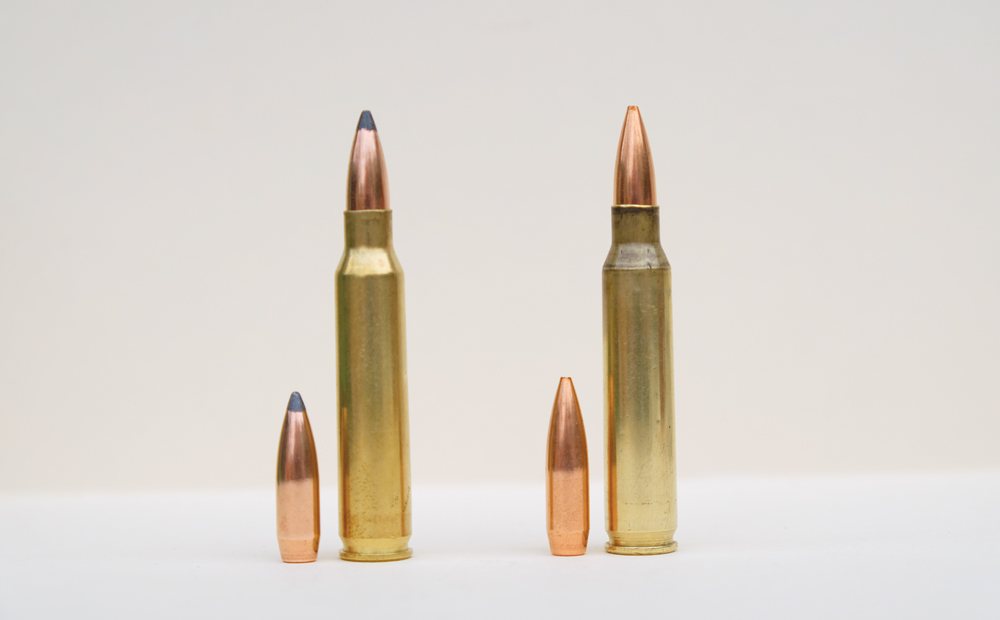At GunDigest, we independently review products. However, we may earn a commission when you purchase through links on our site. Learn More
How-To: Handloading Tips for the AR-15

Handloading for the AR-15 isn't much different than for other rifles. But given it is a semi-automatic, there are some special considerations that must be taken into account when putting together a round.
Though outside dimensions of 5.56×45 and .223 Remington are the same, there are some important differences for handloaders. Some current handloading manuals show different data for 5.56 and .223, usually with the heavier bullets listed in the 5.56 data. It’s best to obtain at least a couple of “paper” load manuals that contain desired data rather than using data from dubious sources.
Some 5.56 brass is considerably heavier than .223 brass and has less powder capacity. I weighed a number of 5.56 cases and .223 cases. In most instances, the weight difference was negligible.
However, I did find some 5.56 cases that were about 5 percent heavier than other brass. Erring on the side of safety, this would require a slight powder reduction if maximum or near-maximum loads are used.
Many 5.56 cases have primers crimped in place. To seat a new primer, the crimp must be removed. There are a variety of tools available with which this one-time procedure can be performed.
Before I began this project, I asked for advice from longtime Sierra Bullet employee Carroll Pilant. Carroll is an active three-gun competitor and has had much experience with AR-15s and handloading. His first statement with regards to handloading was, “Get a case gauge!”
There are a number of case gauges on the market. I bought one manufactured by JP Enterprises and found out quickly the importance of such a tool.
My .223 handloads for the Ruger bolt action I’ve been shooting for 25 years wouldn’t come close to functioning reliably in a Colt AR-15. Brass should be sized to the point (usually full-length) where it will easily fit the gauge.
New brass should be no problem, but once-fired cases might be. With once-fired, I full-length size and check every case after sizing using the gauge.
It’s also imperative to check case length at this point and trim as needed. I discard any case that won’t fit the gauge after full-length sizing. Loaded rounds are also spot-checked with the gauge.
After handloading at least 1,500 rounds for my AR-15s, I’ve experienced no cartridge feeding problems and no empty cases have been stuck in chambers. Get a case gauge.
I’ll also mention some nominal points regarding components:
One hundred percent reliable functioning and accuracy are my biggest concerns with regard to my own ammunition. I have not tried any of the bulk full-metal-jacket boattail bullets, usually of 55 grains. Reports on these vary, but it’s probably best to stay with those made by the big, reputable manufacturers.
As mentioned earlier, the 53-grain Sierra MatchKing and several 55-grain varmint bullets from Hornady, Nosler and Sierra all shot with respectable accuracy in the Colt AR-15s. The same can be said for the Sierra 63-grain semi-point, 65-grain GameKing and the 69-grain MatchKing in both plain and “tipped” versions. Hornady 68-grain and 75-grain Match bullets also shot well.
I used four powders, Ramshot’s TAC, and Hodgdon’s CFE223, Benchmark and H4895. Best loads so far include the 65-grain GameKing and 24 grains of H4895 or 24 grains of TAC, and Sierra’s plain (untipped) 69-grain MatchKing with the same powder charges. These loads are near maximum in some published data and powder charges should be reduced for initial load development.
Bullets were seated to just under maximum recommended length of 2.26 inches to assure reliable functioning in magazines. Brass was Remington, and CCI400 small rifle primers were used.
Best loads were slightly more accurate than any of the commercial match ammunition I fired, but not by much in some instances. While I was able to shoot some five-shot groups well under 1 inch at 100 yards, I could not do it every time and many groups were 1 inch or larger.
Editor's Note: This article is an excerpt from Gun Digest 2018, 72nd Edition.
Next Step: Get your FREE Printable Target Pack
Enhance your shooting precision with our 62 MOA Targets, perfect for rifles and handguns. Crafted in collaboration with Storm Tactical for accuracy and versatility.
Subscribe to the Gun Digest email newsletter and get your downloadable target pack sent straight to your inbox. Stay updated with the latest firearms info in the industry.